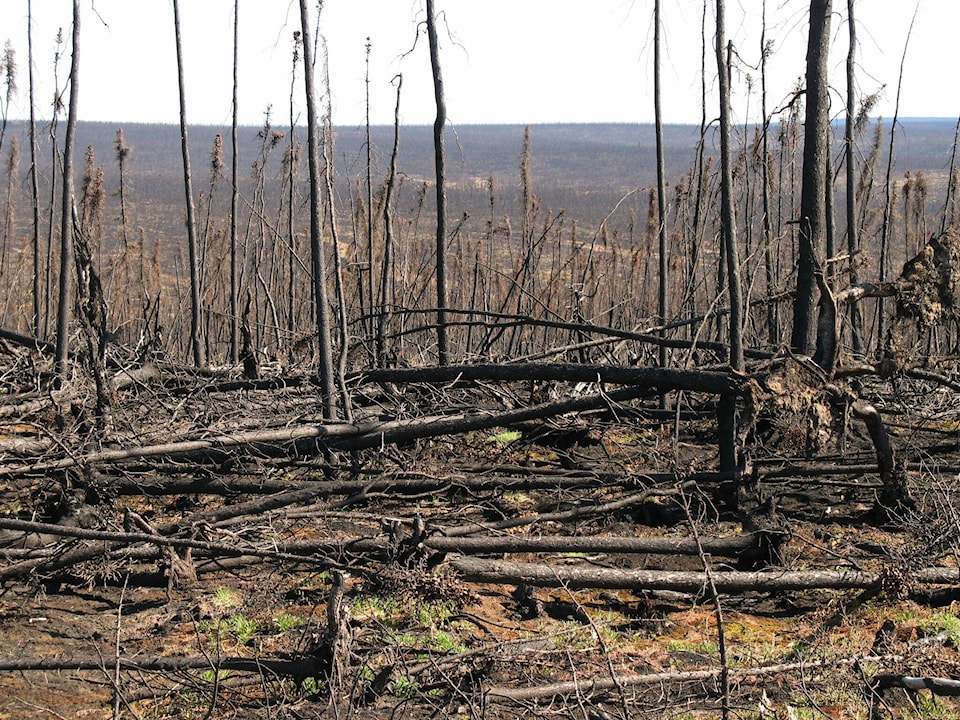The black spruce of Canada’s boreal is a hardy, slow-growing tree that tolerates tough cold and damp growing conditions and is naturally adapted to bouncing back after a wildfire.
But in the era of climate change, the era of the black spruce might be giving way.
“The species is very well adapted to ensure resilience to fire because it has evolved in situations where fire is very abundant. But now we’re this combination of a warming climate and human ignition and we’re getting a lot more fire on the landscape,” said Jill Johnstone, an independent researcher based in the Yukon and affiliated with Yukon University who specializes in how boreal forests adapt to climate change.
“Even that fire-adapted strategy has a limit and a rapid-fire cycle is pushing it to the brink,” she said.
Johnstone was one of several authors on a research study published Oct. 25 in the Proceedings of the National Academy of Sciences that looks at how boreal forests regrow after a fire event.
For thousands of years the black spruce has existed alongside wildfire – adapting to harness the destructive power of heat and flames for reproduction. Black spruce have a built-in plan for post-wildlife rebuilds: the fire itself warms spruce cones to release seeds that allow the original forest to regrow.
| Researcher Jill Johnstone is one of the authors of a new paper focused on black spruce recovery following wild fires. (Submitted) |
The forest floor where the black spruce thrives – cold permafrost and damp peat – have helped ensure these seeds would survive.
But researchers have found that as fires burn more frequently and deeper into a drier forest floor, the black spruce is facing tough competition from other species. In around 18 per cent of cases, the forests failed to come back in any form.
Johnstone and her fellow researchers analyzed 1,538 sites across boreal forest from Alaska to Newfoundland. Their analysis looked at compositional changes in tree species following 58 recent fires from 1989 to 2014.
The study included Yukon data from sites such as the Fox Lake burn, Pelly Crossing and Eagle Plains on the Dempster highway.
In the Yukon and Alaska, they found that black spruce was often being edged out by birch and aspen. Rates of re-forest failure were higher in the Alaska Interior region and in the Cordillera region in Yukon and northern B.C.
“It’s clear that things really are changing,” Johnstone said. “This is the early signal that we’re picking up on the ground that the recovery after fire is shifting. That will then translate into how our mature forests look after several decades.”
| The charred remains of a tree. (Submitted) |
The shift from black spruce to leafy green aspen and birch brings uncertainty to the future of Canada’s western boreal forest. While both tree species grow faster than spruce and are able to sequester carbon, they also support a different type of ecosystem.
For example, black spruce forests are a favourite for wintering caribou, who rely on the thick lichen growth of the forest floor.
Johnstone said that old, established forests have built up a strong resistance to weather variability. But fire can cause a sudden reset.
“It’s like shuffling a deck and handing out the cards. You have to play with that hand for the rest of the game. That’s sort of how it works with these western boreal forests. A couple years after a fire, that’s when the deck is dealt. And then those are the cards,” she said.
Watching the results unfold can be difficult from aerial surveys, where all regrowth looks bright green, said Johnstone. The ability to study over a thousand datasets from the ground allows researchers to see rapid change.
As a result, Johnstone said they’re very confident in the finding of the study. The boreal forest wraps around the globe, providing potential for future studies to look at how black spruce are being affected in places like Russia and Europe.
Contact Haley Ritchie at haley.ritchie@yukon-news.com
